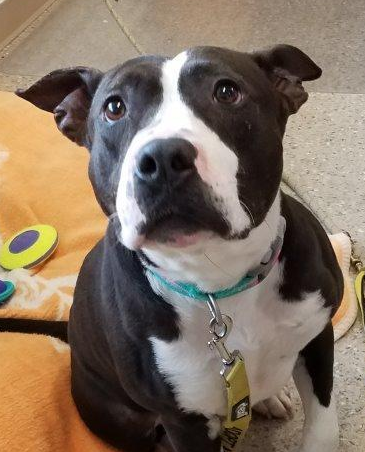Let's Talk About Definitions
Wild Rivers Animal Rescue • February 6, 2020
What is a "no-kill" versus a "kill" shelter? What about a "Socially Conscious" shelter?

In animal sheltering, we hear a lot of terms thrown around that much of the general public doesn't understand. "No-kill", "Kill" and "Socially Conscious" What does it all mean?
While this isn't true for every "no-kill" shelter, it is true for quite a few. We at Wild Rivers Animal Shelter do not find this acceptable. We believe that animals should only be euthanized if they are: Injured beyond vet care, sick beyond vet care or behaviorally dangerous. Animals should never be euthanized based on space or owner request.
Lets get it out of the way first. What is a "kill" shelter? This is a shelter that typically euthanizes an animal for space. Typically, it doesn't matter the age of the animal or condition of the animal, if the animal is past its stray hold and the shelter is full-the animal dies. This type is most common in government shelters. Thankfully, many shelters are doing their best to work towards a more "no-kill"mentality.
The biggest phrase in animal sheltering is, of course, "No-Kill". But what does "no-kill" mean?
In major animal sheltering circles, "No-Kill" means shelters euthanize less than 10% of their population. This also means that up to 10% of any "no-kill" shelter can be euthanized for any reason.
While this isn't true for every "no-kill" shelter, it is true for quite a few. We at Wild Rivers Animal Shelter do not find this acceptable. We believe that animals should only be euthanized if they are: Injured beyond vet care, sick beyond vet care or behaviorally dangerous. Animals should never be euthanized based on space or owner request.
We have a duty to save lives. We will not euthanize unnecessarily based on funds or owner request.
There is a new form of sheltering taking seat in the United States that is just as misleading at the "No-Kill" title. "Socially Conscious Sheltering" is a newer (and seemingly better) type of animal sheltering in the United States. While it seems better on the outside looking in, it is just as fraught with issues as "no-kill" sheltering is.
"Socially Conscious Sheltering" consistently fails animals with unique behavioral needs. Many animals who come into animal shelters with unique behavioral needs can be helped, but much of the time, they cannot be helped inside a shelter because the shelter exacerbates the negative attributes of any animal. Fostering is the key here as animals who are in need of more one-on-one help and a stress free environment can be helped greatly outside of the loud and scary shelter environment.
"Socially Conscious Animal Shelters" choose to not place animals with behavioral issues into the community choosing instead to euthanize them. While sometimes, there are animals who are dangerous and shouldn't be housed in the community, a majority of animals with minor behavioral issues go on to enjoy long lives with adopters. (To add, the leaders of this movement work with shelters that euthanized "pit bull" breeds due to "breed specific legislation").
Because animal sheltering loves titles, I would love to coin a new descriptor for Wild Rivers Animal Rescue that fits us a bit better than the typical "No-Kill" title: Compassionate Animal Sheltering.
We believe that all animals in our care deserve the utmost compassion, from care and cleaning to enrichment; Compassion is key to sheltering.
We believe that no animal should face euthanasia unless an animal is sick beyond vet care, injured beyond vet care or behaviorally dangerous. We also believe that it is more humane to let an animal go peacefully through euthanasia than it is to make them languish with painful illness or injury that cannot be corrected by veterinary treatment.
We are here to do what is the best (and most compassionate) for animals in our care. This may mean fighting to save an animal who has been neglected or understanding when an animal tells us it is time for them to go. These are difficult decisions to make but we will always do them for the betterment of animals in our care.

I am sure we are all (more or less) familiar with animal adoption procedures. You go to a shelter, fall in love with an animal and then have a ton of paperwork to fill out before you can even think about bringing the animal home. The paperwork is usually super time-consuming too. Every adoption application (seemingly) wants to know every address you have ever lived at, what food you had for supper last night, and what your grandma’s name is. Okay so that is a bit extreme but it isn’t too far off. I recently lost my 17 year old cat. After she passed, I began my search for a new companion as my younger cat needs someone to play with. I searched high and low for a special needs kitty and applied to multiple organizations across the country. I filled out so much paperwork! One of the applications I filled out was 6 pages long! It was too much. Anyone who knows me knows that my animals do not want for anything. My animals see the vet regularly and are always fed the best foods. My animals are also never without toys and enrichment. Would you believe, every application I placed was denied? Every single one. Each organization decided I was unfit to care for one of their animals for various reasons. One said I didn’t make enough money and another said I spayed my dog too early. What all of them had in common was how impersonal the adoption process was. I never once had the opportunity to actually speak to anyone about the animal or about the kind of adopter I am. They took what was on the paper at face value and didn’t even think about who I am off paper. When I began my work here at Wild Rivers Animal Rescue, I was astonished to hear that our adoption policies were much the same as these organizations I was denied by. People were denied adoptions very frequently based on really trivial reasons. None of the adoption process really had a human component. People were judged by what they looked like on paper and that was it. My first day here, I told myself I wasn’t going to change anything too big. I was wrong! I had to change this ASAP! Every organization I have worked for has always done open, conversational and transparent adoptions. These require minimal paperwork. What we do instead of paperwork is talk to people. The adoption process starts as soon as someone is greeted at the door. From the moment an adopter is greeted to the moment they leave with their animal, the adoption process is happening. Through this process, we can greet people from a place of “yes” instead of from the typical “no” many adopters get if they are just judged by how they look on paper work. Adoptions that come from the place of “yes” are adoptions where education is readily accessible. Previously if someone needed education on animal husbandry they would be denied instead of educated. Education is a key to helping our community become better as a whole for pets and is integral to our adoption process. On top of being conversational, our adoptions have changed a ton on paper! Instead of four long pages to fill out when you adopt, there is only one. This process is already working! In just two short weeks, we have had 13 adoptions! 13! How amazing is that? Because we removed barriers, we have opened up the world of pet adoption to many people who wouldn’t be considered on paper. We must come from a place of “yes” in this field because it is what truly serves the pets in our care the best way possible. Please see the below articles on this type of adoption process and how although it may seem unorthodox, it works best for the pets in our care! Thank you! Nicole Farrell Executive Director Wild Rivers Animal Rescue https://americanpetsalive.org/blog/the-easy-guide-for-adoption-and-foster-best-practices https://chewonthis.maddiesfund.org/2020/03/why-shelters-and-rescue-groups-need-to-unstop-the-customer-service-bottleneck-to-save-more-lives/ https://www.animalsheltering.org/page/adopters-welcome-faqs
